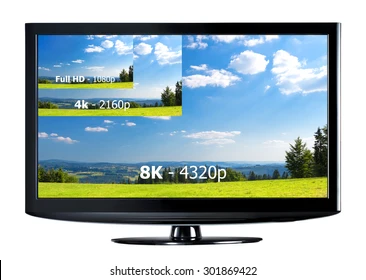Table of Contents
Screen resolution is how clear the images and graphics generated appear on the display interface. High resolutions make images and graphics look sharper. They also make images and graphics smaller so that the screen can accommodate more content. A low-resolution monitor displays larger but fewer contents on the screen.
If you want to know how to measure monitor size, it is the dimension of the monitor measured diagonally, from corner to corner. The most common computer monitor's screen sizes range from 19 inches to 34 inches.
An average user will need a monitor size of 22 inches or 24 inches. However, professionals and enthusiasts in different fields will need different monitor sizes depending on their needs. For instance, monitors for gaming need to be between 24 inches and 32 inches.
Monitor resolution increases with the increase in the monitor size. The size of the monitor and its video card dictates whether you can modify your resolution. A larger monitor with a higher resolution is the ideal monitor for gaming. Resolutions and monitor sizes affect coding, gaming, work, and the general monitor performance.
For instance, in coding, a larger monitor gives you enough viewing space for your coding lines, meaning you will have enough time for magical incantation typing. Gaming on larger monitors gives you enough viewing space. The larger the monitor, the more the resolution. This means the display quality will be high, ensuring the best gaming experience.
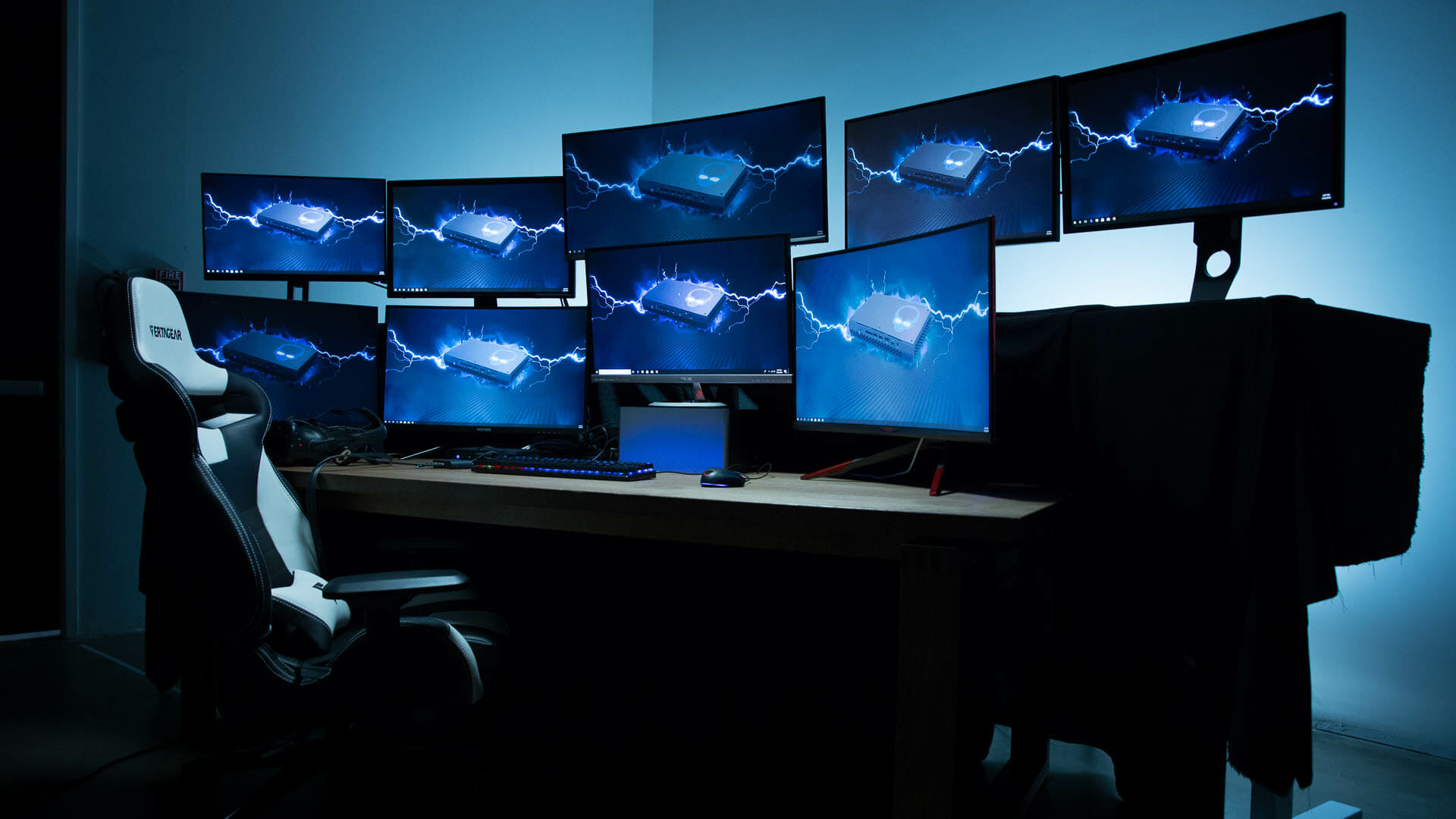
What Are the Best Monitor Sizes According to Resolution?
The best monitor sizes according to resolution are as follows.
- 24 inches and lower sizes are best for 1920 × 1080 resolution.
- From 25 inches to 27 inches are best for 1440 pixels resolution.
- 30 inches and large screen sizes are best for 4K resolutions.
Generally, the monitor size will depend on the resolution and the position you sit from the monitor. Also, as the monitor size increases, the resolution increases. This ensures consistency and top performance in monitors in all ranges of applications.
The list given below illustrates how screen sizes change according to resolution. In case you're curious, you can find out your monitor size with these steps.
- Best Monitor Size for 720p
- Best Monitor Size for 1080p
- Best Monitor Size for 2K
- Best Monitor Size for 4K
1. Best Monitor Size for 720p
The best monitor size for 720p is 19 inches or a smaller screen size. 720 pixels resolution is suitable for 19 inches screens because 720p resolution has a lower pixel count, which would be insufficient for larger monitors.
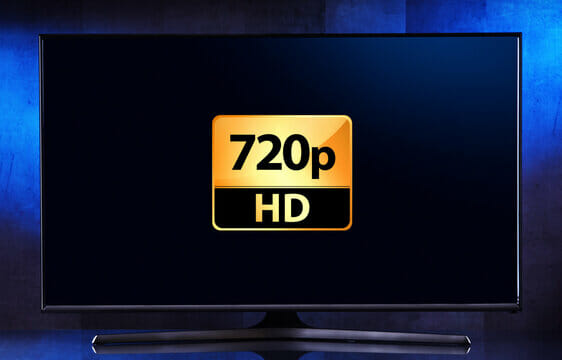
A lower resolution on a larger monitor will produce larger images and graphics, affecting the monitor's display and performance in the long run. The screen resolution for this category would be 1280x720.
The problem with 720p is that it has a lower pixel count and lower screen resolution. This resolution won't be sufficient for many applications, including gaming. Gaming pros need a resolution of 1080p or higher on a 24-inch size or larger. You can solve this problem by ensuring you match the 720p resolution with the appropriate screen size. Consider using it on a 19-inch screen or smaller screen sizes.
2. Best Monitor Size for 1080p
The best monitor size for 1080p is 21 inches or 24 inches. Any monitor between 21 and 24 inches will perform accurately with a 1080p resolution. The 1080p resolution ensures quality image production and display and is ideal for various applications. The reason why 21 inches and 24 inches screen size is the best for 1080p is that the pixel count for 1080p resolution is enough for such monitor sizes. The number of pixels is higher than in 720p resolution. However, moving past 24 inches will require higher resolutions for vibrant display quality and excellent performance. The exact screen resolution for 1080p resolution is 1920 x 1080. The screen's height will have 1080 pixels, while the width will be 1920 pixels. The total pixels for this monitor size will be 2,073,600 pixels. This pixel count will have a suitable pixel density on a 21-inch or 24-inch screen.
The problem with 1080p resolution is that it may produce blurry images and graphics when used on larger monitors. This problem is that your gaming performance will be affected, and the general monitor performance will also be affected. You can solve this problem by matching the 1080p resolution with the appropriate monitor size, 21 inches or 24 inches. Also, set your monitor to its default resolution if 1080p isn't the native one.
So, what are the best 1080p monitors? 1080p monitors are monitors with higher refresh rate capabilities, popular for gaming. They have excellent performance and are much more affordable than 1440p and 4K displays (see also 1440p Vs. 1080p comparison). Such monitors have a lower pixel count, meaning they won't overwork the graphics card. You can also refer to such monitors as Full HD Monitors.

Some of the best 1080p monitors are listed below.
ASUS VG279QM
ASUS TUF Gaming VG259QM
Dell Alienware AW2521H
Acer Nitro XF243Y Pbmiiprx
3. Best Monitor Size for 2K
The best monitor size for 2k resolution is 27 inches. A monitor size range of 27 inches and 32 inches is ideal for 2K resolution. The 2K resolution looks good on 27 inches because a 2K resolution pixel count will produce a suitable pixel density on this monitor size. 2K resolution has the better image quality and a greater display than 720p and 1080p resolutions.
The exact screen resolution for 2K resolution is 2,048 x 1,080 and 2560 x 1440. For 2,048 x 1,080 screen resolution, the monitor will have 2,048 pixels on its width and 1,080 pixels on the height. This arrangement produces a total count of 2,211,840.
Similarly, 2560 x 1440 screen resolution will have 2,560 pixels on its horizontal interface and 1440 pixels on the height, producing a total count of 3,686,400 pixels. The pixel density of this resolution will look good at 27 inches but can stretch to 32 inches. This monitor size and resolution provide a good experience in gaming and other applications.
The problem with the 2K resolution is that it is expensive. You'll incur much more buying a 2K monitor than purchasing a 720p or 1080p monitor. Also, high resolution means more pixels. The graphics card will therefore require more power to process the extra pixels. The result is that the frame rates of the monitor will decrease, which may affect the gaming performance of the monitor.
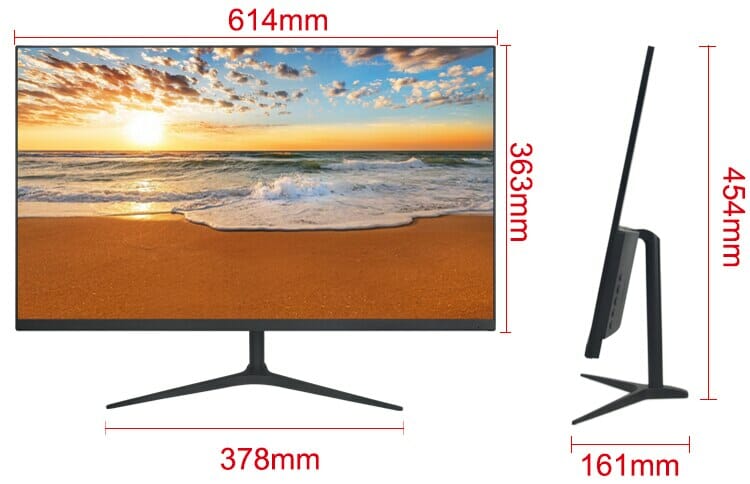
To solve the frame rate drop, you need to update your graphics card drivers, disable Intel Turbo Boost technology, or turn off fullscreen optimization.
So, what are the best 2K monitors? 2K monitors are medium-sized monitors with a high pixel density that allows the monitor to display more details. Such monitors can maintain higher frame rates in competitive games like CS:GO. They are widely used as gaming monitors and are compatible with Xbox One X, Xbox Series S, and Xbox Series X.
Some of the best 2K monitors are listed below.
Samsung LC32G75TQSNXZA
MSI Optix MAG274QRF-QD
ASUS ProArt Display PA278CV
4. Best Monitor Size for 4K
The best monitor size for 4K resolution is 32 inches. 4K resolution is best for 32 inches because, when capped with a 16:9 aspect ratio, it provides enough space, which allows for convenient working with your monitor. It also allows you to split the screen to display multiple windows on the same screen. This resolution also has more pixels, suitable for varied applications. The exact resolution for 4K resolution is 3840 × 2160. This means that the monitor has 3840 pixels on its horizontal interface and 2160 on its vertical axis, bringing the total pixel count to 8,294,400. This results in a pixel density fit for a 32 inches monitor. 4K resolution is four times the pixels for Full HD resolution, meaning its quality is also high.
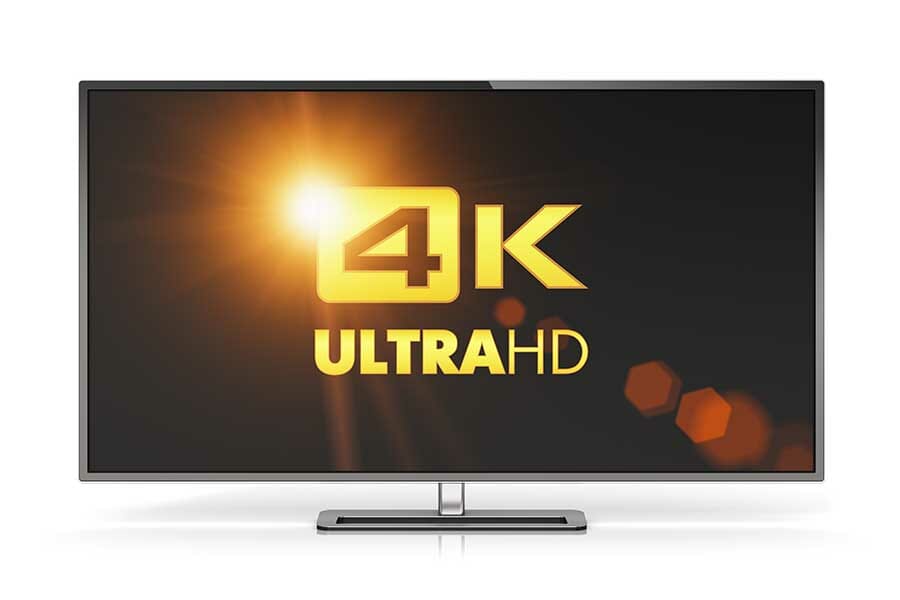
The problem with the 4K resolution is that it can compromise the frame rates of your graphics card. Higher resolutions require much power to process the high number of pixels. This, in turn, results in a drop in the frame rates of the monitor. Pro gamers are well versed in this problem and may affect your gaming experience significantly. You can solve the frame rates drop problem by updating your GPU (see our GPU guide) and turning off fullscreen optimization. Don't forget that 4K monitors are expensive alternatives.
So, what are the best 4K monitors? The best 4K monitors can deliver up to 3840 × 2160 screen resolution. Some of these 4K monitors are designed for higher refresh rates, while some aim to provide accurate color reproduction for graphics professionals. They are widely used in gaming, production works, and multimedia applications.
Some of the best 4K monitors are listed below.
Dell UltraSharp U4320Q Monitor
Samsung M7 4K Smart Monitor
BenQ EL2870U 4K Monitor
Samsung S70A 4K HDR10 VA Monitor
5. Best Monitor Size for 8K
The best monitor size for 8K resolution is any monitor larger than 32 inches. The 8K resolution is ideal for monitors larger than 32 inches because it has more pixels to create excellent pixel density for large-sized monitors. The exact screen resolution for 8K resolution is 7680 × 4320. This means that the monitor has 7,680 pixels on its horizontal axis and 4,320 pixels on its vertical axis. This brings the total pixel count to 33,177,600 pixels. The high pixel count is ideal for larger monitors than 32 inches. High screen resolution means that the images and graphics produced will appear more sharp, detailed, and top-quality. The high resolution also gives you enough room for multiple content displays. You can create several windows for display on the same screen at once.
The problem with 8K resolution is that it can drop the graphic's card frame rates. The monitor will have to forego the FPS to accommodate the high pixel count. Otherwise, the monitor won't function correctly, and you may experience the monitor malfunctioning. Solving the FPS drop is straightforward. You can update the graphics card's drivers or disable Intel turbo boost technology.
So, what are the best 8K monitors? The best 8K monitors are the monitors that can deliver screen resolutions of up to 7680 × 4320. The high resolutions of such monitors allow them to be used in a wide range of fields. They have an accurate and high-quality color display and high refresh rates, making them ideal for gaming. Other than gaming, you can still use such monitors for multimedia and production applications. The downside to these monitor types is that they are expensive alternatives. Some of the best 8K monitors are listed below.
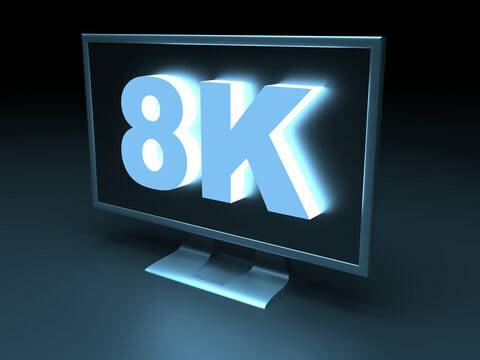
Dell UltraSharp UP3218K
Samsung 8K monitor
What Are the Best Monitor Sizes According to Usage Purpose?
According to usage purposes, the best monitor size varies depending on the usage specifications. For instance, the best monitor size for a gaming monitor won't be the same as the monitor size for production, multimedia, web designing, or personal applications. Average monitor users will need a monitor size of 22 inches or 24 inches. However, professionals and enthusiasts in different fields will need different monitor sizes depending on their needs. For instance, monitors for gaming need to be between 24 inches and 32 inches. The monitor size needs to increase with the nature of the work. You'll require a bigger monitor whit graphic designing or analytic works, as you may need to create several windows on the same screen. A larger monitor can also replace dual monitors for convenience.
The list below illustrates how the screen size changes according to usage purpose.
Best Monitor Size for Gaming
Best Monitor Size for Work
Best Monitor Size for Programming
Best Monitor Size for Dual Setup
1. Best Monitor Size for Gaming
The monitor type best for gaming is a monitor with a screen size range of 24 inches to 32 inches. These monitors should have high screen resolution, high refresh rate, fast response time with low input lag, and high frame rates. The monitor should also be compatible with Adaptive Sync technology and technologies engineered to address users' wellbeing. An increase in the monitor's size should match with an increase in the resolution for smoother gameplay. Therefore, the screen resolution for a 32 inches gaming monitor should be higher than the resolution for 24 inches.
Screen size is important for gaming monitors because gaming on a screen larger than 32 inches may result in early fatigue. You will need to move your eyes frequently while playing to cover the wide display size. Also, gaming on larger monitors with low resolutions may result in low-quality displays, which may affect your gaming experience.

The best monitor size for gaming is 24 inches to 32 inches. This is the perfect size for a gaming monitor as it provides enough space for a broader view but is not too big to cause fatigue. Also, the display size is ideal for higher pixel density, resulting in a quality display.
Therefore, what are the best monitors for gaming? The best monitors for gaming are the monitors that meet the minimum specification requirements for the various games. These monitors have high refresh rates, fast response time, high frame rates, and variable refresh rates.
Some of the best monitors for gaming include:
Alienware 25 AW2521HF
LG 27GN950-B
Pixio PX277 Prime
Gigabyte G27Q
2. Best Monitor Size for Work
The best monitor for work is one with a screen resolution of not less than 1920 x 1080. The monitor should also be between 24 inches and 30 inches. Besides, it should have an aspect ratio of 16:9, and an IPS panel would be an added advantage. Screen size is vital in monitors for work because such applications need just the proper pixel density for optimum performance.
The best monitor size for work ranges from 24 inches to 30 inches. This monitor size for work optimizes resolutions and display clarity. The display size is also large enough to fit several web pages on the same screen, eliminating the need for a dual monitor setup.
So, what are the best monitors for work? The best monitors for work are monitors that balance resolution and screen size. They are usually between 24 inches and 30 inches.

Some of the best monitors for work are listed below.
ASUS ProArt Display PA278CV
Dell S2721QS
LG 38WN95C-W
3. Best Monitor Size for Programming
The best monitor for programming is a monitor with a display size of not less than 27 inches. When it comes to programming, you would want to go for a larger monitor with a widescreen that can allow you to create several windows on the same screen. The monitor should also have eye-care technologies to care for the user's wellbeing as you will have long working sessions on the monitor. These monitors also need to have an ergonomic design so that the user's comfort is well taken care of. The refresh rate for such monitors needs to be 60 Hertz or higher. The monitor should also have a resolution of not less than 1920 x 1080.
Screen size is essential in monitors for programming as you would need a larger monitor that can allow you to create several windows on the same screen, allowing for multitasking.

However, the monitor need not be too big to maintain a perfect pixel density to ensure the display quality of the monitor is top.
The best monitor size for programming is 27 inches or larger. You need such big monitors to ensure you can multitask while programming. The size is perfect for creating several windows on the same screen.
So, what are the best monitors for programming? The best monitors for programming are monitors with large display interfaces and high display resolutions for quality image and graphics production. Large screens provide enough space for creating multiple windows on the same screen, allowing for multitasking.
Some of the best monitors for programming are listed below.
LG UltraFine Display 32UL950
ViewSonic VP2458 Professional 24-inch monitor
BenQ PD3200U
4. Best Monitor Size for Dual Setup
The monitor type for dual setup is a monitor with a display size of not more than 32 inches. The monitor also needs to be light in weight not to exert so much weight on the stand.
Monitor size is essential in monitors for dual setup because too big monitors will exert much pressure on the monitor stand, leading to the breaking of the stand. Also, too big monitors on a dual setup will result in too big a viewing size, which may cause eye strain when viewing the whole interface.
The best monitor size for monitors for dual setup ranges from 24 inches to 32 inches. This is a perfect size as, when combined, a larger display size gives a sufficient viewing interface but is not too big to cause eye strain. The ample space also allows you to multitask as you can create several windows on the same screen.
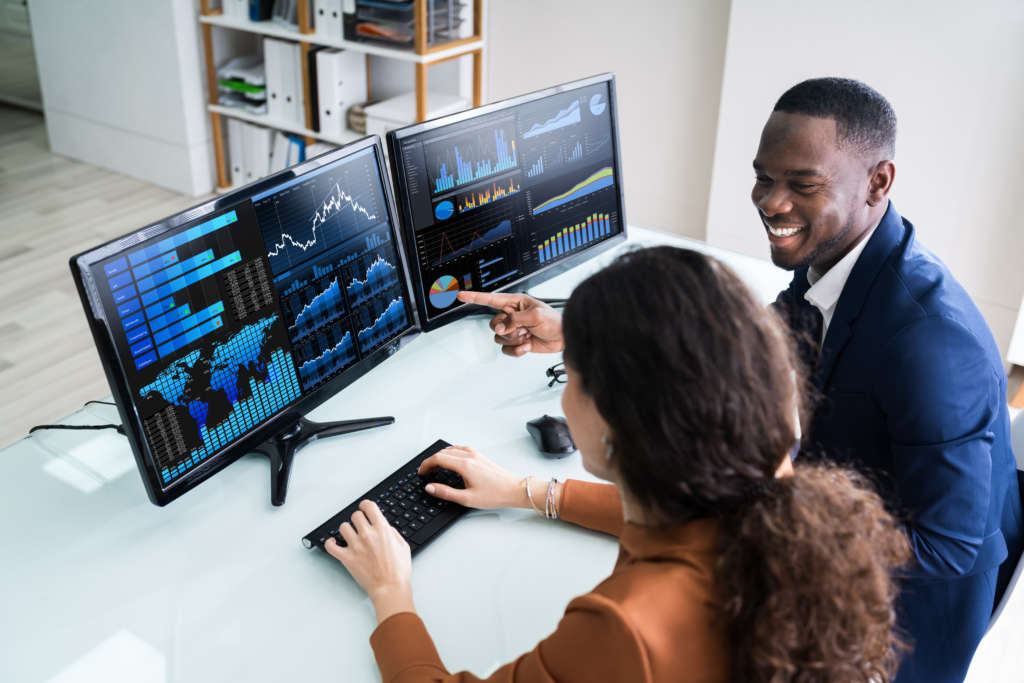
Therefore, the best monitors for dual setup are monitors with a display size between 24 inches and 32 inches. These monitors are also light, ensuring they don't exert much pressure on the monitor's stand.
Some of the best monitors for dual setup are listed below.
LG 27QN600 QHD 27 monitor
Samsung UJ59 (LU32J590UQNXZA) monitor
Philips 276E8VJSB monitor
What Size Monitors Should You Choose?
The size of the monitor you should choose depends on your application specifications. You will need a monitor between 24 and 32 inches for gaming and a dual setup. A 27-inch monitor is ideal for work, but if you're planning on programming, you'll need a monitor greater than 32 inches in size.
Other than application specifications, you may also need to consider the size of your room. If you have enough room for workspace, you may choose a larger monitor; otherwise, you may be limited to smaller monitors. The resolution of the monitor is the next consideration. If the monitors have lower resolutions, a smaller monitor would be better than a larger one. The pixel density of small monitors is high, meaning the display quality will be high.
The next consideration is how far you sit from where you position your monitor. Consider a larger monitor if the monitor is too far from your seat. However, if you sit a shorter distance from your monitor, a smaller monitor won't be a terrible choice; all the other factors have been put into play.
What Are the Most Used Sizes of Monitors?
The most used sizes of monitors are listed below.
19 inches. The best resolution for a 19-inch monitor is 720p with an exact screen resolution of 1280x720.
24 inches. This monitor size is the minimum size for gaming monitors and monitors for work. Its resolution is 1080p with an exact screen resolution of 1920 x 1080.
27 inches. This monitor size has a wide range of applications. It is used for gaming, work, and dual monitor setup. Its best resolution is 2K with an exact screen resolution of 2,048 x 1,080 and 2560 x 1440.
32 inches. This monitor size is ideal for gaming, work, programming, and dual monitor setup. Its best resolution is 4K with an exact screen resolution of 3840 × 2160.


